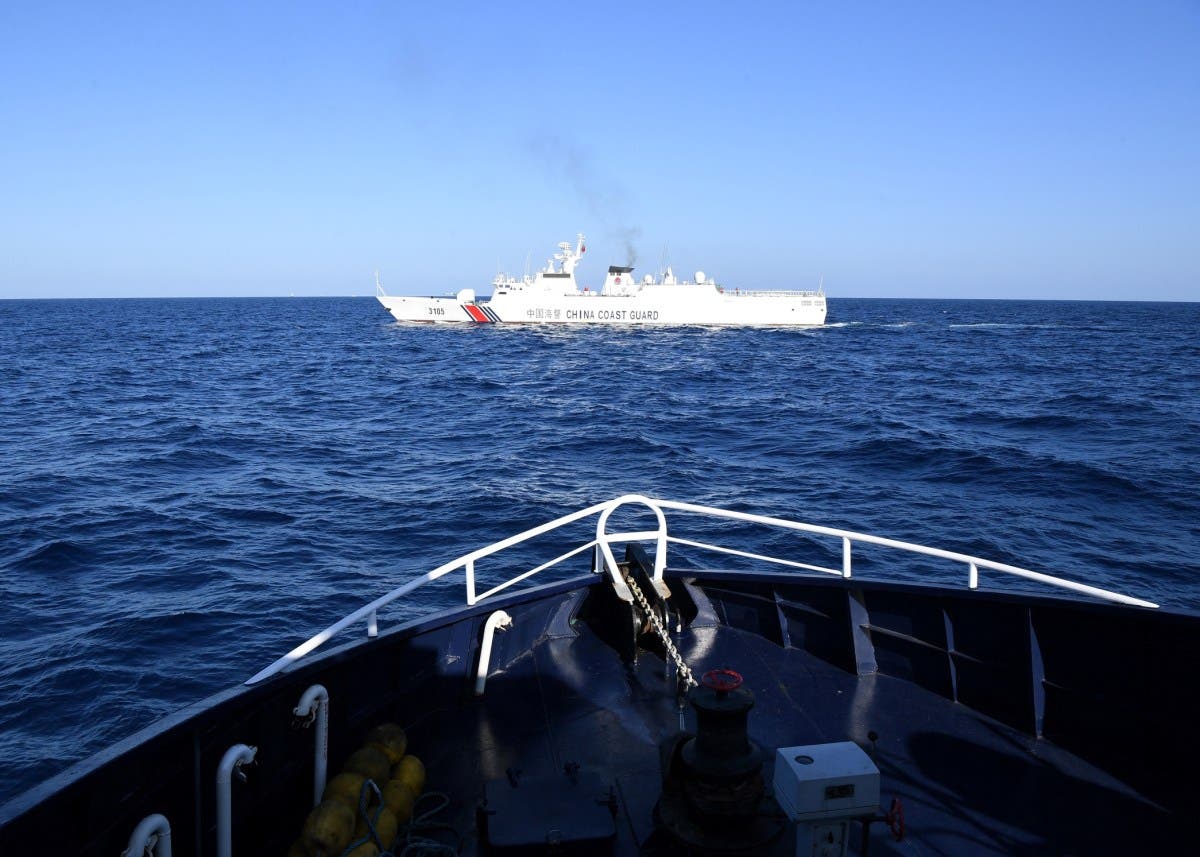UPDATE: China has just deployed a naval supply vessel in a significant escalation of tensions with the Philippines over the contested Scarborough Shoal in the South China Sea. This urgent move comes amid ongoing territorial disputes that have drawn the attention of the United States, a key ally of the Philippines.
Chinese authorities have ramped up their coast guard operations, claiming sovereignty over vast maritime areas, including those overlapping with Philippine territory. The deployment of the CNS Qinghaihu, a replenishment ship assigned to China’s Southern Theater Command, signals a more aggressive stance in these disputed waters.
On October 17, 2025, footage captured by ABS-CBN News revealed two Chinese naval vessels and four coast guard ships operating near Scarborough Shoal, also known as Bajo de Masinloc in the Philippines. Commodore Jay Tarriela, spokesperson for the Philippine Coast Guard, stated that the flight was intended to challenge China’s “unlawful declaration” regarding a naval training exercise within the Philippine exclusive economic zone (EEZ).
The Philippine EEZ extends up to **230 miles** from the coastline, where the country has sovereign rights to explore and exploit natural resources, as per the United Nations Convention on the Law of the Sea. The Scarborough Shoal is particularly contentious; while it lies within this zone, it is currently under Chinese control, leading to frequent standoffs between the Philippine and Chinese maritime forces.
Experts are closely monitoring this situation. Naval analyst Alex Luck highlighted that the at-sea replenishment between the Chinese naval and coast guard ships is an unusual but expected development, given China’s expanding maritime capabilities. “Replenishment at sea would enable Chinese coast guard units to maintain a persistent presence in contested waters,” he noted.
The Pentagon has confirmed that the China Coast Guard is the largest maritime law enforcement fleet globally, with newer vessels designed to operate farther offshore and stay on station longer. This escalation not only affects the Philippines but also has broader implications for regional security, particularly for U.S. interests in the area.
As the situation develops, observers are left wondering about the next steps. Analysts suggest that the possibility of the China Coast Guard operating its own replenishment ships could further intensify the ongoing maritime conflicts in the South China Sea.
This situation is unfolding rapidly, and the international community is urged to stay alert as both China and the Philippines navigate these turbulent waters. The stakes are high, and the implications for regional stability are profound.





































































